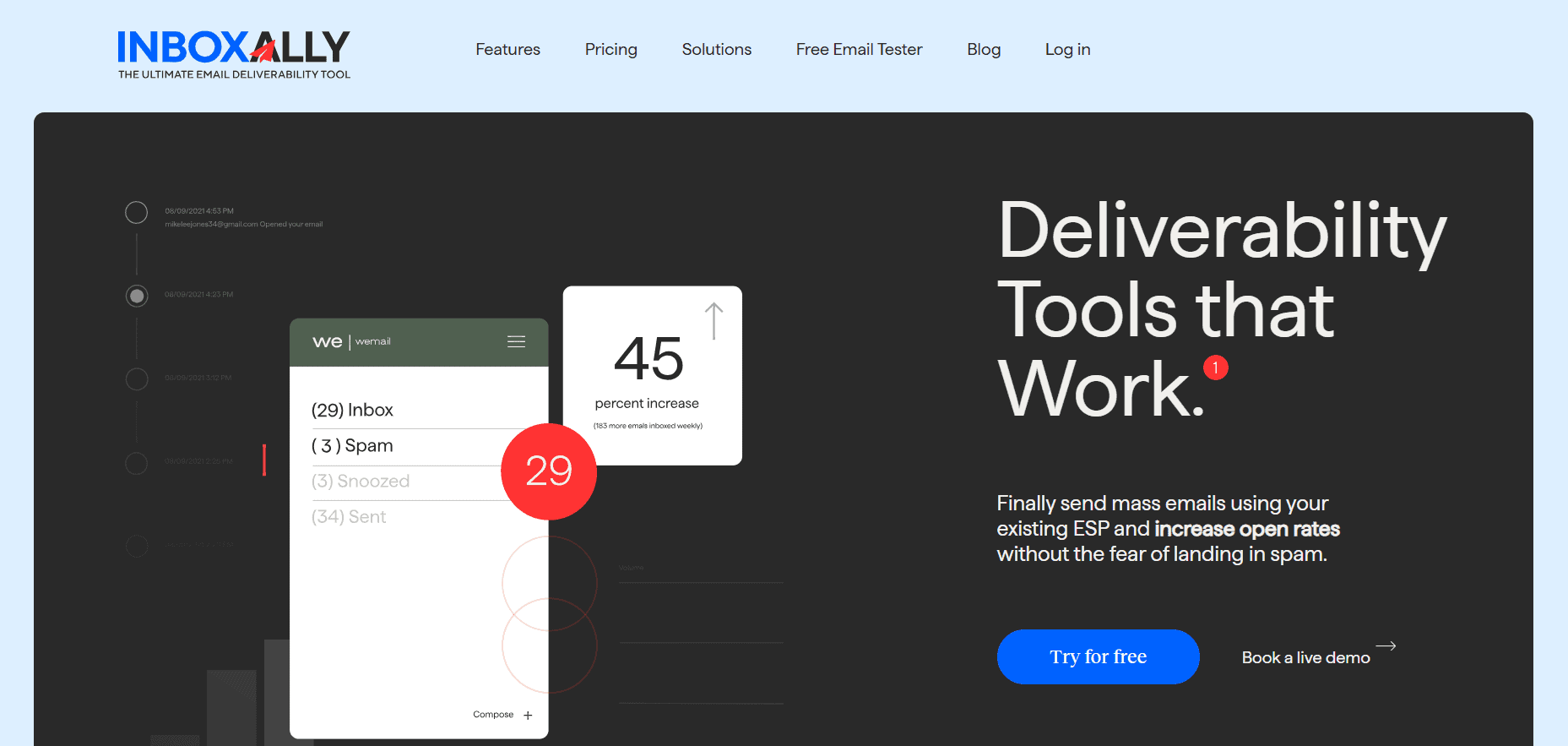Last Updated on October 28, 2025 by Ewen Finser
I love Keap for blending CRM, email automation, and sales tools all in one platform. But it might not be the best fit for you, depending on your business size, goals, or budget.
Let’s look at my favorite alternatives to Keap (plus one tool that improves all of them).
The Best Keap Alternatives
- ActiveCampaign (5/5)- Best for advanced automation and customer journey mapping
- HubSpot (4.5/5)- Best for combining email marketing with a full CRM
- Mailchimp (4.5/5)- Best for all-in-one marketing for beginners
- Zoho CRM (4/5)- Best for flexible, modular business tools
- Salesforce (4/5)- Best for enterprise-level CRM customization
- Pipedrive (4/5)- Best for sales-focused teams needing simplicity
- InboxAlly (5/5)- Best for improving deliverability on any platform
InboxAlly is the comprehensive suite I need to solve challenging deliverability problems across the board. It's like a triage hub for diagnosing and fixing email deliverability rates in one dashboard. I've tried a lot of tools, but this is the one I've stuck with.
1. ActiveCampaign: Best for advanced automation and customer journey mapping
ActiveCampaign is just incredible when it comes to marketing automation.
Its visual builder lets you craft complex workflows based on user behavior, and predictive sending and lead scoring add another level of personalization. The built-in CRM integrates seamlessly with emails, making it a dream for customer engagement.
If you’re managing multiple audiences and want a platform that offers comprehensive segmentation, ActiveCampaign delivers.
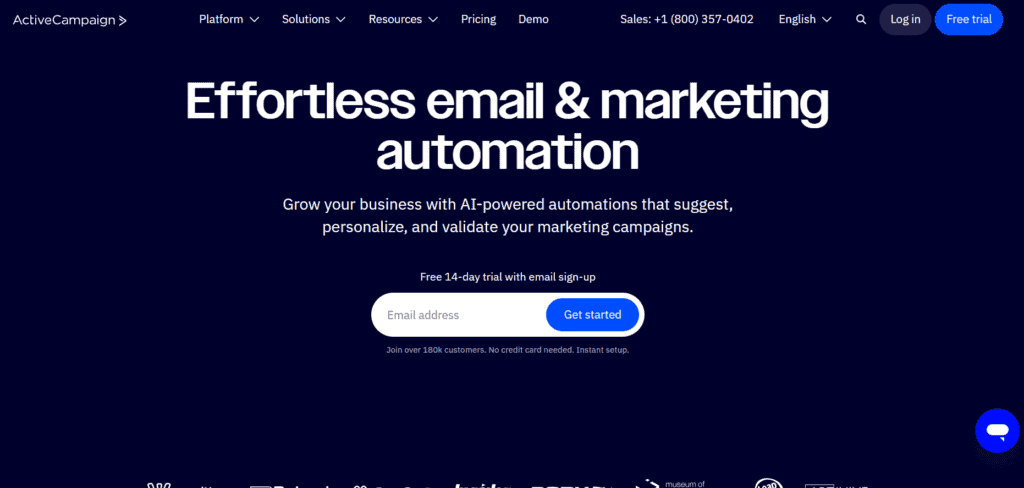
Why it’s a good alternative to Keap: It offers far more flexible automations and further personalization, perfect for teams outgrowing Keap’s workflow limits.
Pricing: Starts at $15/month
Pros
- Visual automation builder
- Lead scoring built-in
- Predictive sending
- Advanced contact segmentation
- Integrated CRM
Cons
- No free plan
- Learning curve for beginners
- Onboarding setup can take time
Features
- Visual automation workflows
- Contact tagging and scoring
- Site and event tracking
- Email and SMS marketing
- CRM with pipeline views
- Predictive email content
2. HubSpot: Best for combining email marketing with a full CRM
HubSpot combines marketing, sales, and customer service in one user-friendly platform. Even on the free plan, you get features like contact management, landing pages, forms, and email campaigns.
It scales easily from small business to enterprise, especially when you start layering in other tools Marketing Hub and Sales Hub. Everything works together wonderfully, creating one central hub for customer data.
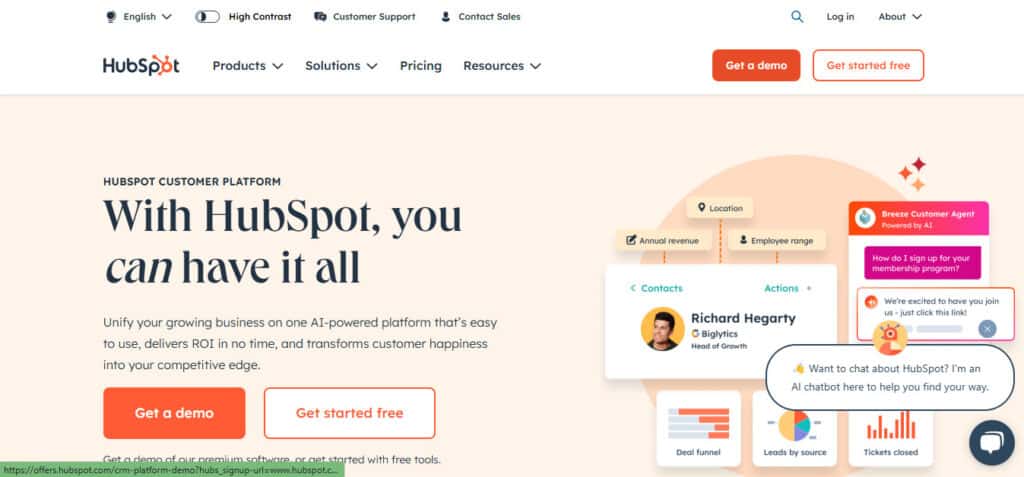
Why it’s a good alternative to Keap: HubSpot’s free CRM and native integrations make it better suited for teams who want everything under one roof.
Pricing: Free tools available; Marketing Hub starts at $20/month
Pros
- Incredible free CRM
- Seamless automation tools
- Great reporting
- Centralized customer dashboard
- Extensive integrations
Cons
- Paid plans get expensive
- Email features limited on free tier
- Some features locked to higher tiers
Features
- CRM and pipeline management
- Email marketing and forms
- Marketing automation workflows
- Landing page builder
- Blog and SEO tools
- Sales tools and contact timelines
3. Mailchimp: Best for all-in-one marketing for beginners
Mailchimp is a long-time favorite for getting started with email marketing and light CRM.
This is for good reason. The templates are easy to use and it offers automations to cover basic needs like welcome emails and abandoned cart sequences. It’s especially useful if you want everything including forms, campaigns, reports, and ads in one dashboard. For smaller lists and simpler goals, it offers the best value.
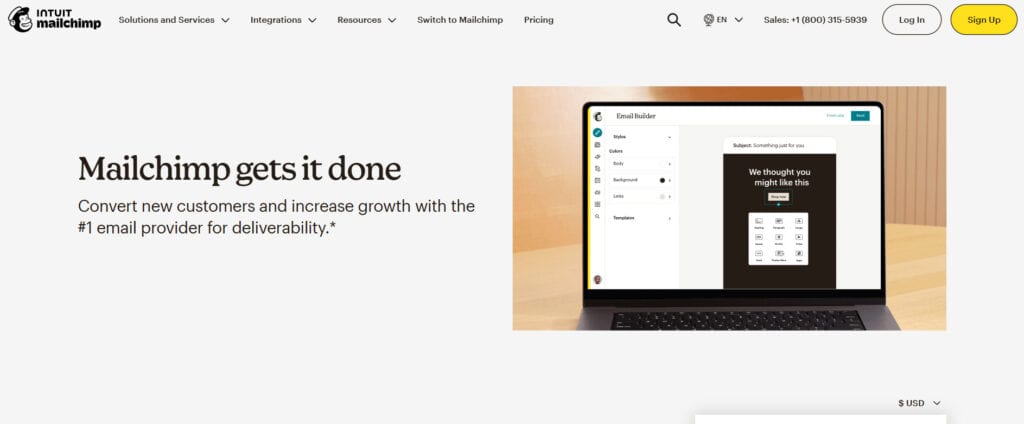
Why it’s a good alternative to Keap: It’s easier to use and more affordable for small teams that don’t need complex CRM or sales tools.
Pricing: Free plan available; Paid plans from $20/month
Pros
- Drag-and-drop editor
- Great for beginners
- Ton of templates
- Built-in reports
- Scales as you grow
Cons
- Price increases with list size
- Limited automation depth
- Basic reporting
Features
- Email campaigns and automation
- Landing pages and signup forms
- A/B testing
- Pre-built customer journeys
- CRM-style contact views
- Social posting and ads
4. Zoho CRM: Best for flexible, modular business tools
Zoho CRM is part of a larger suite of tools for businesses that handle everything from invoicing to help desk to email marketing.
The CRM itself is customizable and offers a ton of automation, specific scoring rules, and pipeline management. It’s surprisingly affordable and integrates well with other Zoho products and third-party tools. If you want a flexible stack that grows with you, Zoho delivers.
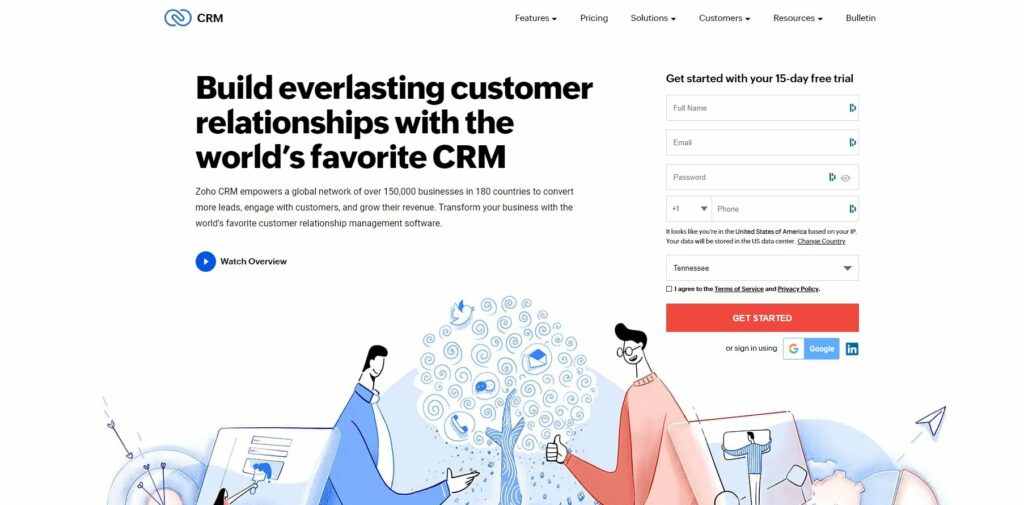
Why it’s a good alternative to Keap: Zoho CRM has more customization options and works across departments with solutions for sales, support, marketing, and more.
Pricing: Free plan available; Paid CRM plans from $14/month
Pros
- Highly customizable
- Affordable plans
- Workflow automation
- Big app ecosystem
- Strong reporting
Cons
- UI is a little clunky
- Steeper learning curve
- Email tools are basic
Features
- Workflow automation
- Sales pipelines
- Contact and deal tracking
- Web forms and scoring
- Email integration
- Analytics and dashboards
5. Salesforce: Best for enterprise-level CRM customization
Salesforce is like the gold standard for enterprise CRMs. You can customize almost every field, process, and report to match your workflow, and you can integrate with just about any tool.
It’s powerful but best for teams with the budget and technical resources to really use it to the fullest. For complex organizations or those with unique processes, it’s unbeatable.
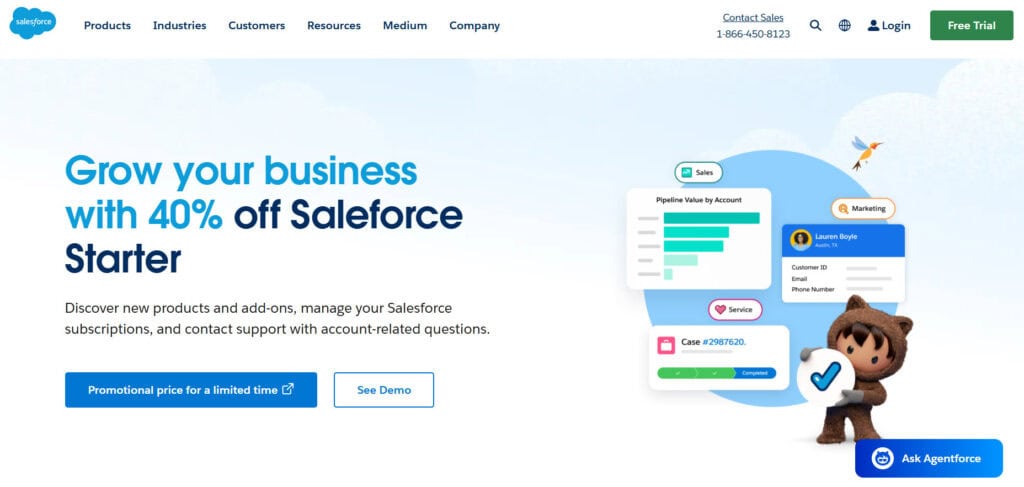
Why it’s a good alternative to Keap: Salesforce is better suited for large teams with complex sales processes, which is something Keap can’t handle at scale.
Pricing: Essentials starts at $25/month; higher tiers vary
Pros
- Extremely customizable
- Scalable for large teams
- Extensive integrations
- Powerful reporting
- Built-in automation tools
Cons
- Expensive
- Setup takes time
- Can be overwhelming
Features
- Lead and opportunity tracking
- Process automation
- Custom dashboards
- Email and calendar sync
- AppExchange integrations
- Sales forecasting
6. Pipedrive: Best for sales-focused teams that need simplicity
Pipedrive is a CRM built by salespeople, for salespeople. Its pipeline view is one of the best out there, helping teams visualize and manage deals in a clean, organized way.
It’s quick to set up, easy to use, and surprisingly powerful for its simplicity. I think it’s just perfect for small teams that just want to sell.
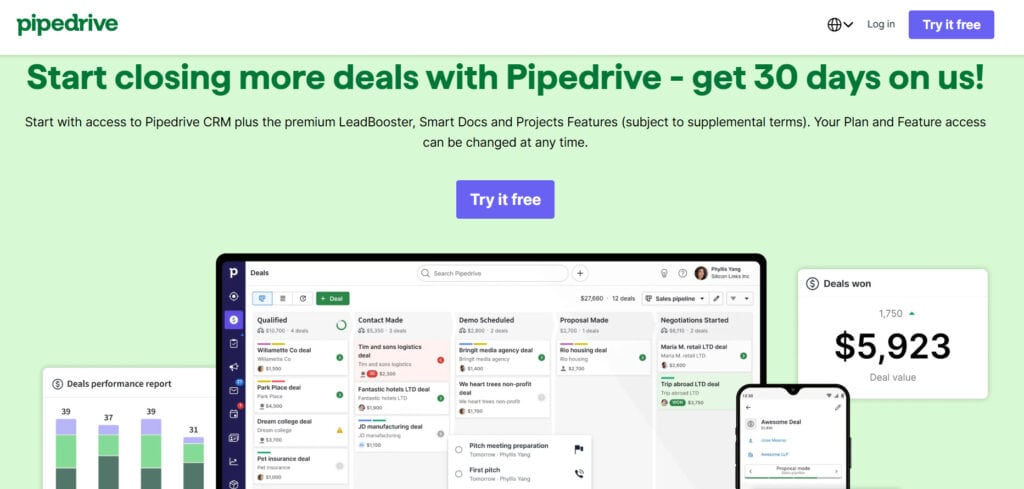
Why it’s a good alternative to Keap: Pipedrive’s visual pipelines are more intuitive and focused solely on sales outcomes than Keap’s more all-in-one approach.
Pricing: Starts at $14/month
Pros
- Clean, visual interface
- Easy to use
- Great pipeline tracking
- Sales-focused features
- Affordable
Cons
- Limited marketing tools
- No free plan
- Few native automation options
Features
- Sales pipeline views
- Deal tracking and goals
- Email and call logging
- Lead forms and chatbots
- Reporting and forecasting
- Integrations with email platforms
7. InboxAlly: Best for improving deliverability on any platform
InboxAlly is the comprehensive suite I need to solve challenging deliverability problems across the board. It's like a triage hub for diagnosing and fixing email deliverability rates in one dashboard. I've tried a lot of tools, but this is the one I've stuck with.
One of my favorite things about InboxAlly is that you can use it no matter which CRM you go with.
InboxAlly isn’t a CRM or email builder, but instead, it’s a tool that boosts deliverability. By simulating human interactions like opens, clicks, and replies, it helps improve your sender reputation and inbox placement.
It’s especially powerful if you use cold email as a company or have high-volume outreach campaigns that are struggling with spam filters. Use it along with any of the above platforms to maximize your email marketing results.
Why it’s a good alternative to Keap: Pairing InboxAlly with your chosen platform gives you better inbox rates than Keap’s native deliverability alone.
Pricing: From $149/month
Pros
- Boosts email placement
- Mimics real engagement
- Can be used with any platform
- Custom warm-up options
- Clear deliverability metrics
Cons
- Expensive for small users
- Not a full marketing tool
- Requires some setup knowledge
Features
- Engagement simulation
- Domain reputation support
- Spam/inbox placement reporting
- Custom warm-up strategies
- Gmail/Outlook compatibility
- Deliverability insights dashboard
How I Chose These Alternatives
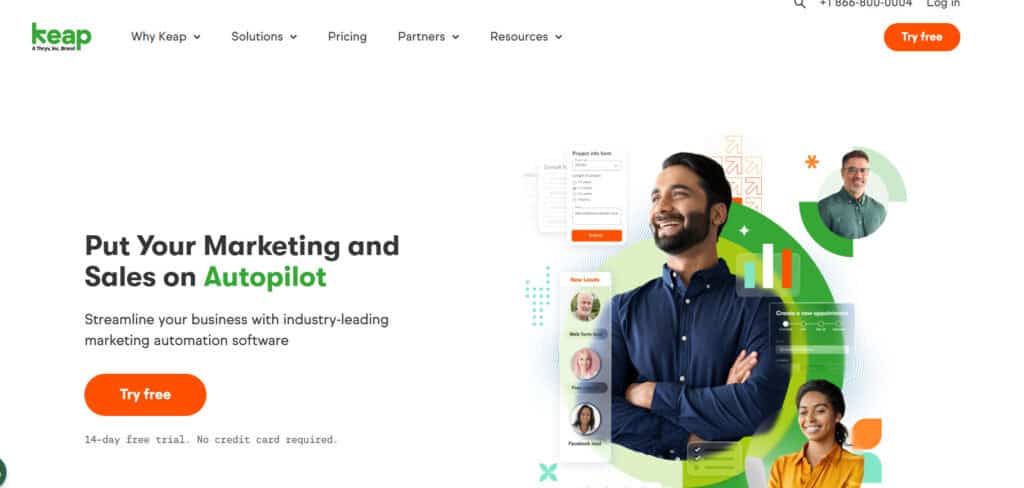
Here are some of the things I compared when choosing this shortlist.
Features
I focused on platforms that offer some important similar features to Keap: email automation, CRM, contact segmentation, lead scoring, and sales pipelines. Bonus points for extras like SMS, landing pages, and form builders.
Pricing
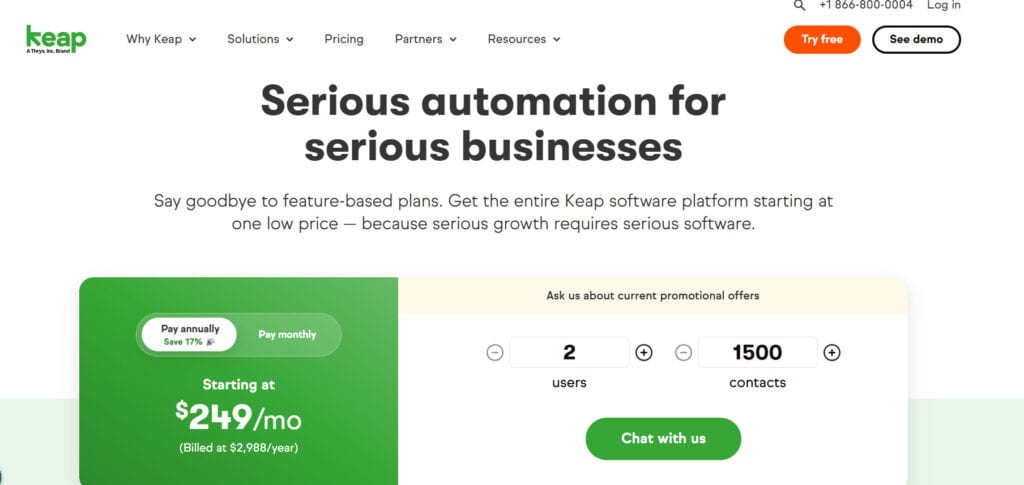
I compared what you get at each pricing tier, especially for small to midsize businesses. I looked for platforms that offer strong value without locking the most important tools behind the expensive plans.
Ease of use
I considered how user-friendly each tool is, from setup to daily use. Clean dashboards, drag-and-drop editors, and helpful onboarding made a big difference here.
Specialized strengths
Some platforms made the list because they do one thing really well like sales CRM (Pipedrive), deliverability (InboxAlly), or enterprise customization (Salesforce). I wanted options for different needs.
Real-world reputation
Beyond my own experience, I also leaned on user reviews, testimonials, and third-party ratings to weed out overhyped tools. The ones I chose have active support, consistent performance, and happy users.
So, Which Is the Best Keap Alternative?
If you want an all-in-one CRM system that scales like Keap does, HubSpot or ActiveCampaign are great choices.
For sales-heavy teams that want simplicity, Pipedrive is the best option. If your focus is email and automation for small biz, Mailchimp or Zoho CRM will save you time and money.
And if deliverability is a problem no matter which platform you use, pair your platform with InboxAlly.
InboxAlly is the comprehensive suite I need to solve challenging deliverability problems across the board. It's like a triage hub for diagnosing and fixing email deliverability rates in one dashboard. I've tried a lot of tools, but this is the one I've stuck with.


